We all make mistakes in genealogy; I’ve certainly made a few. Hopefully, we learn from them, move on, and become better researchers. Here are the five biggest family history mistakes that I think are being made in genealogy research today and what I recommend doing instead.

Using other online trees as sources
In my opinion this is probably the biggest mistake that family historians are making today. Parts of other people’s online trees are being copied without checking to see it they’re accurate.
I’ve looked at a lot of public online trees lately and almost all of the ones I saw contained significant errors. One example had an agricultural laborer who lived in Devon (England) all his life with a baptism record from Suffolk; two places 350 miles apart. A quick look at the Devon census records that were attached to the laborer showed that this must have been incorrect as he was, of course, born in Devon.
I found the correct Devon baptism record on another site which showed different parents to the ones on the tree. The tree was in fact wrong for three generations back from the agricultural laborer due to this Suffolk error. I’m guessing that someone hadn’t been able to find a Devon baptism record on Ancestry but they’d had a hint for the one in Suffolk as the name and the year were about right, so they used that.
What made it worse was that there were at least 12 other trees making exactly the same mistake with this person. So the original incorrect tree was being copied and spread like a virus.
According to Ancestry themselves, there are 100 million family trees on the site containing 11 billion ancestral profiles. I don’t know how many of these trees contain errors, but based on personal experience, I reckon it’s more than half of them. So there could be more than 50 million online trees out there with errors. That’s pretty serious if correct.
Another interesting fact on the Ancestry site is that they have 3 million paying subscribers. That probably means that most of the 100 million trees on Ancestry do not belong to current subscribers. Many of these incorrect trees probably belong to people who no longer have a subscription and so they are therefore never likely to be corrected. I’m sure that the longer someone has been a subscriber, the more accurate their tree is likely to be.
Recommendation
Use other online trees as clues, not sources. Look at the person on the tree and check the facts. Only use these facts once you have checked the source citations and the attached documents. Make sure that you are comfortable that they fit in with your own research. Never ever use a fact from another tree that has no citation or document attached. Try and verify that fact yourself and if you can’t, don’t use it.
Keeping your research in one place
Looking at the number of online trees there are and the number family tree software programs sold, it’s pretty safe to assume that most family historians only use online trees for their research. If your only tree is on a subscription site like Ancestry, then this is another mistake in my view.
If you don’t renew your subscription, you’ll still be able to view your tree, but not the documents attached to that tree. Also, you never know what’s going to happen in the future. The subscription sites might change their policies for keeping trees and delete them after a certain time period. Or they might get hacked, or a tree may disappear because of some technical fault. I lost my tree on Ancestry for a week last year. I got it back, but it makes you think.
Recommendation
If you have an online tree, the best solution is to have software on your computer like Family Tree Maker or Roots Magic. These programs can sync with online trees on Ancestry and Family Search so that you can keep the same tree online and offline.
Alternatively you can use a free open source family tree program like Gramps. This software does not sync with online trees, so you will have to manually download documents as you go along.
If you do all your work offline, don’t forget to regularly back up to an external hard drive or to the Cloud.
For more on this topic, see this post.
Assuming names were always spelt the same way
Names are often a big issue in genealogy and can be a major cause of brick walls. Most people couldn’t read or write until the end of the 19th century, so names were written on documents by officials or by church ministers and they often wrote down what they heard. A surname like “Wright” for example may have been spelt “Rite”, “Right” or even “Royte”.
First names often have variations and will be written in different ways. A child christened “Elizabeth” may appear on other documents as “Eliza”, “Liz”, “Lizzie”, “Beth” or “Bessie”. Look out for nicknames too. My aunt was known by everyone as “Nan”, but she appeared on all official documents with the name she was christened with, “Annie”.
Recommendation
If you can’t a person where you expected to, use Google to find name variations and search using these.
Ignoring siblings and spouses
I’ve written about this in more detail here, but it’s worth repeating; just researching your direct lines is a mistake. You can often find valuable information by researching the siblings and spouses of your direct lines.
As an example, I was looking at someone called Alfred recently who was born in the early 1800s. Alfred had five siblings, all baptized in the same church. The recorded details for Alfred and four of his five siblings were the same, ie first name and surname of father, first name only of mother and the name of the parish recorded as the abode. However, Alfred’s youngest sibling, Elizabeth, had a bit more information on her record. There was a different minister for this baptism and he had additionally recorded the mother’s maiden name and the street address for the abode. I would not have found this if I hadn’t looked at the siblings.
Spouses too should be researched as they may have been cousins. This was often the case in rural communities.
Recommendation
Always research each generation thoroughly, including siblings and spouses, before moving on to the next.
Giving up too soon
I often hear of people researching their family tree that hit a brick wall and then just give up. If I see their trees I usually notice that they have just tried to go back as far as they can, as quickly as they can, without researching each generation properly before moving on to the next.
Recommendation
I always think that researching a family is a bit like undertaking a police inquiry. To be successful in your investigation, you have to work like a detective gathering all the possible evidence available for each generation. This can’t be rushed otherwise mistakes and/or omissions will occur and you’ll hit a brick wall too soon.
And don’t just rely on Ancestry for all your records, look at other sites like FindMyPast and The Genealogist .
For more help see:
- How I Break Down Genealogy Brick Walls
- Tips for Breaking Down British Genealogy Brick Walls
- 10 More British Genealogy Tips
- 28 Reasons why your Genealogy Research may be Stuck
- 20 Totally Free UK Genealogy Sites
- 50 Useful English & Welsh Genealogy Websites
Happy researching!
Please pin a pin to Pinterest:

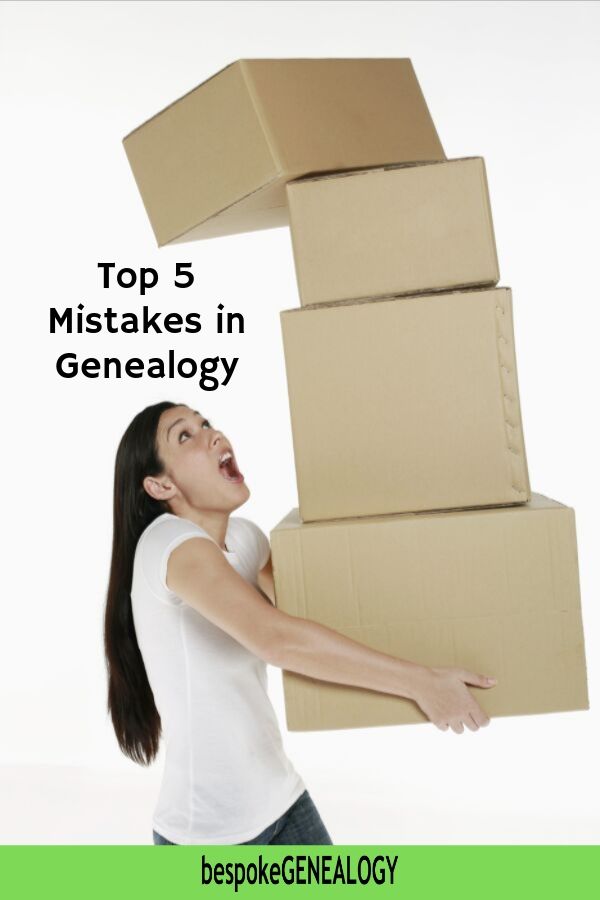
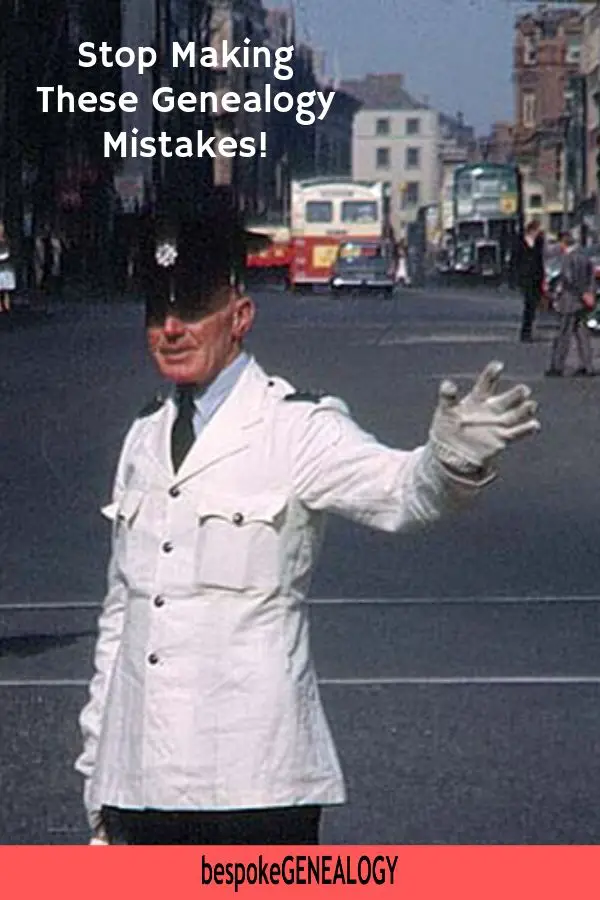


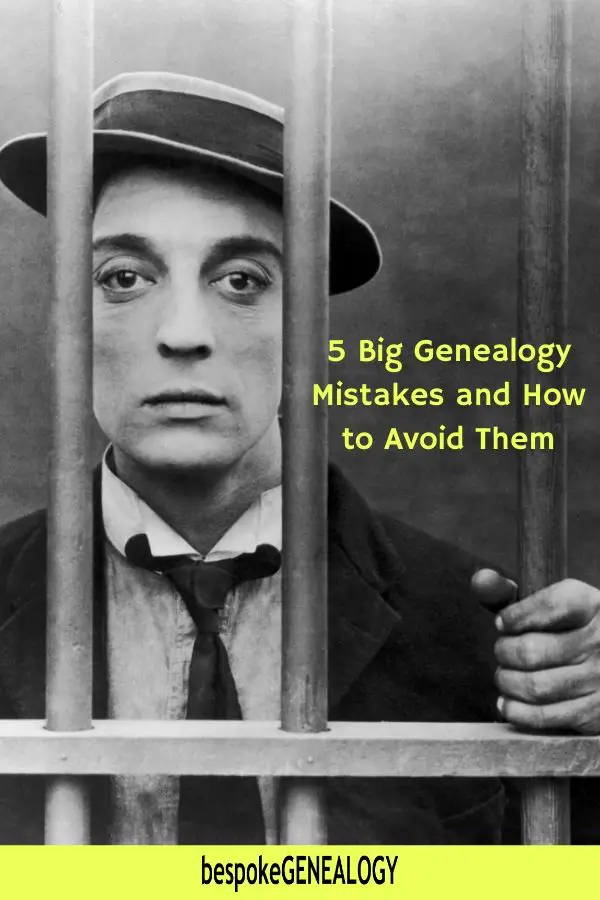

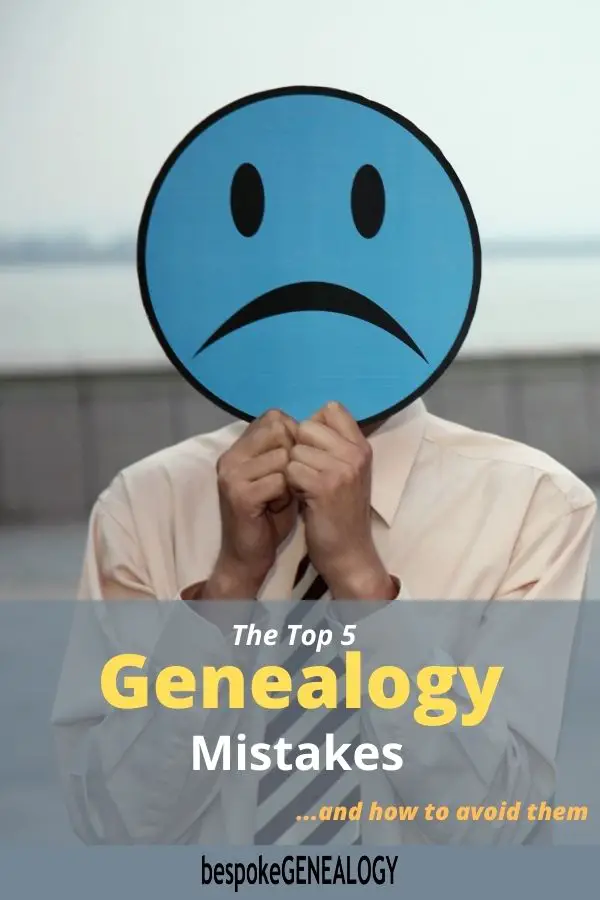
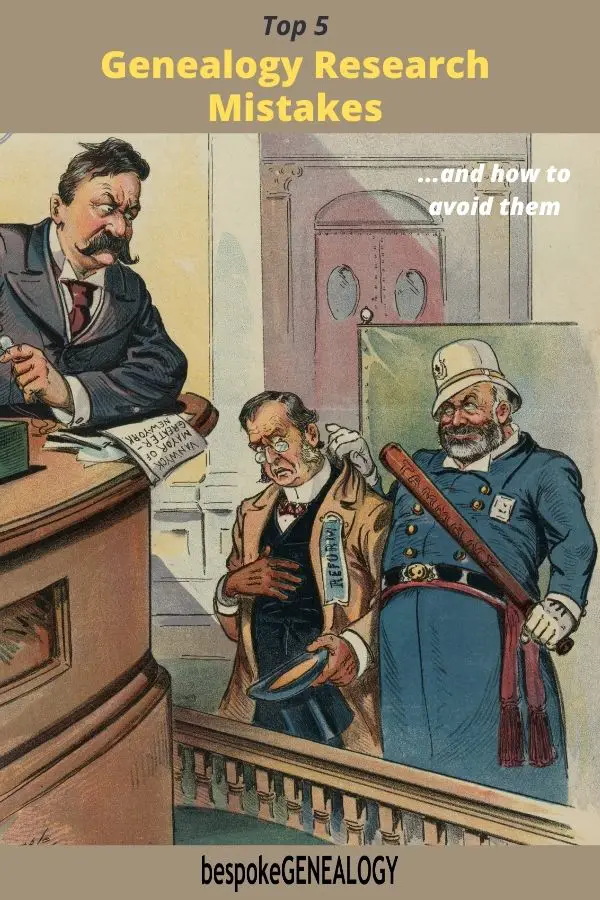

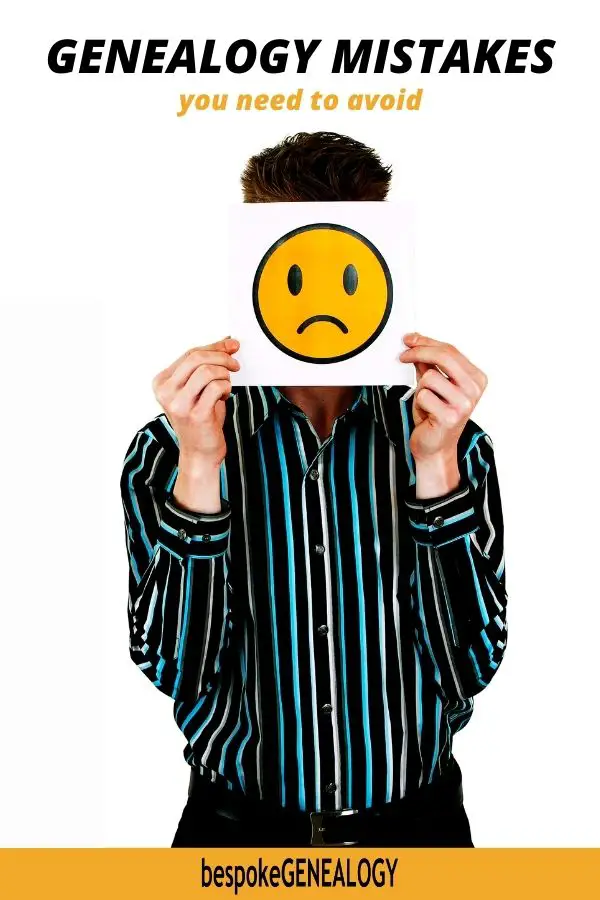



Hi it’s Eve. I was reading the artical on five common mistakes when doing the family tree. Really interesting. (As I am doing oir family tree). However I always make a point of cross-checking all my sources, as several of our family members are in their eighty / nintys & there memories aren’t what they once were. I am the only one, in our family following our family Tree. I live in New Zealand, which can be a problem as it is very isolated. But any good researcher should know these things take time and patience.
Hi Eve, thanks for your comment. I totally agree, family historians need to give their research plenty of time and patience.